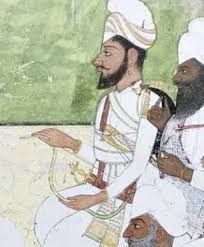BHAGVANT SINGH HARIJI, BHAI (1892-1968), a lover of game, horticulturist and scholar, was born on 15 February 1892 to the erudition of his celebrated father, Bhai Kahn Singh, of Nabha, the creator of the immortal Gurushabad Ratnakar Mahan Kosh. Unobtrusively, and in his characteristically gentle and self abnegating manner, Bhagvant Singh carried the family learning into the second generation. His home provided the best education then available to a young man, though he did attend formally the Khalsa College at Amritsar, then the premier educational institution of the Sikhs.
mahan
Explore the deeper meaning of Aarti in Hinduism and Sikhism, where true worship goes beyond rituals and embraces the beauty of nature and truth.
Explore the profound concept of Aatma and its connection to Paramaatma, God, and the transcendental self in Sikh and Hindu philosophies.
Explore the distinctive and largely unknown Sikh architectural style, with its rich history in gurdwaras, forts, and palaces, by S.S. Bhatti.
Discover the captivating history and architecture of Samman Burj, the octagonal Mughal marvel in Lahore Fort, known for its royal and administrative legacy.
Explore the profound concept of Aatma and its connection to Paramaatma, God, and the transcendental self in Sikh and Hindu philosophies.
Explore the deeper meaning of Aarti in Hinduism and Sikhism, where true worship goes beyond rituals and embraces the beauty of nature and truth.
Explore the profound concept of Aatma and its connection to Paramaatma, God, and the transcendental self in Sikh and Hindu philosophies.
Explore the deeper meaning of Aarti in Hinduism and Sikhism, where true worship goes beyond rituals and embraces the beauty of nature and truth.





